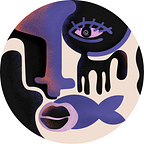Dev Log #10
With most of the overall development for Picasso and Pablo now complete, we approach the final delivery stages as we focus on QA and audits. Because our main focus has been on the product and user experience, we have had to add significant custom code, pallets, and peripheral items that require a broader scope of work. These naturally increased the things we needed to QA, test, and audit.
Our goals are not just to launch a product that meets the bare minimum requirement, rather, we are focusing on establishing a chain and protocol that can genuinely harness and holistically push the ecosystem to broader adoption. With that in mind, we use the below objectives as a framework to aim toward Picasso and Pablo:
- Sufficient liquidity — We built Pablo because we view liquidity as the foundation of any ecosystem. Therefore, we deem it our responsibility to allow Pablo to achieve sufficient TVL where users encounter minimum risks when swapping core assets.
- Feature complete — Forks and protocols with no novel features will likely not survive. Hence, with Pablo, our focus was to deliver as many value-add features as possible such as multiple AMMs, dual farming rewards, fNFT staking, bonding, fair-launch auctions etc.
- User-friendly UI/UX — With the vision of fostering generalizability and composing DeFi for mass adoption, we are focussed on improving the UX process of bridging and interacting with parachains to match that of EVM and IBC ecosystems. Therefore, we invested huge efforts and time building the necessary front-ends and tooling to abstract as much as possible from the user. For Pablo, this means charts, data, being able to see confirmations, etc.
- Onboarding new users to Kusama — One of the largest obstacles to overcome is the lack of new activity within the ecosystem. Therefore, our view is that by establishing a user-friendly bridge from ETH to Picasso, we are able to access liquidity and TVL that would otherwise not migrate sufficiently. Our airdrop pallet will play a key role in this.
- Audited and tested — All of the refactored and custom-built pallets will undergo auditing and rigorous QA as well as internal testing. Whilst we are fully aligned with the “experimental” ethos of Kusama, we will make no shortcuts in our approach to launching products that are as safe and secure as possible.
In our previous publications, we explained what makes Pablo unique. While those features make the product a novel, next-gen DEX, they also naturally lead to further development time. We are now in full swing for our Picasso and Pablo audits, and to provide insight into the amount of work, below is the list of pallets included:
Pallets required for launch
- Apollo oracle
- Assets
- Vesting
- DEX router
- Pablo DEX
- Currency-factory
- Crowdloan rewards
- Democracy
- Staking-rewards
- fNFT
- Mosaic-pallet
Pallets required post-launch
- Bonded finance
- Cubic vaults
- Dutch auction
- Lending
- Airdrop
- Liquidations
Whilst the audits are ongoing as we work with Halborn, we continue to analyze and refine the UI/UX for Pablo as much as possible.
While we are making progress in the audit of Picasso and Pablo in their current stages, our bridging and XCVM teams are consolidating their efforts as well. For Centauri, our design teams have concluded the first versions of the MVP front-end that would feature IBC<>Substrate<> NEAR bridging. Most importantly, we are making significant progress with the IBC light client, the IBC-GO relayer, as well as establishing an entire IBC test suite. Our proposal with NEAR is also gaining traction, and we continue to have productive discussions with the core team. We are now awaiting the green light on our spec before we can proceed with implementation. In addition, our bridging team has had conversations with several other new and emerging chains to explore the potential support of light client trustless bridging through Centauri.
Our work on XCVM is focused on the CosmoVerse event in September, where we will be reeling out the second demo of our top-level orchestration infrastructure. Following the initial presentation at the Unchained conference, alongside our core development, we continue to focus on UI/UX to understand best how both retail users and institutions will interact with next-generation applications such as the XCVM. We are working on new visualization features such as our dev explorer and liveness dashboard to enhance its UX. These focus on showing the network’s detailed information on transactions, operators, and instructions, including clear and user-friendly orchestration steps that simplify complex operations. Whilst there are many existing dashboards and explorers, building one for XCVM requires taking a new approach from an inherently cross-chain perspective. Most of our current development efforts on XCVM are centered around the CosmWasm VM pallet, where we are making significant progress ahead of the September demo. In addition, we are working on developing the backend for our new explorer, CosmWasm smart contract deployment, and our XCVM Rust SDK.
We will continue to share updates with the community, especially once we are in a position to confirm the finalization of audits and therefore prepare for launch. We will be hosting several AMAs and community events over the coming weeks, so please stay tuned to all of our relevant social channels.
For more information about Composable and how it is architecting the unified DeFi landscape of the future, check out our socials:
Twitter | Telegram | Discord | Website | GitHub | LinkedIn | Youtube
